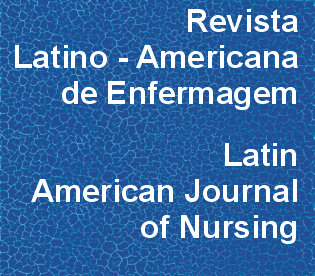Diseases of the osteomuscular system in nursing workers
DOI:
https://doi.org/10.1590/S0104-11692005000300011Keywords:
occupational health, nursing, occupational diseases, cumulative trauma disorders, workAbstract
This descriptive and retrospective research was realized at the Fundação Hospitalar do Estado de Minas Gerais, Brazil, and aimed to analyze health problems related to the osteomuscular system in nursing workers of 23 health institutions, who are attended by the Occupational Health Care Division in 2002. Data were collected from the care service maps and from the medical records, on the basis of a script elaborated by the authors. The diagnoses were grouped according to the International Classification of Diseases CID-10 - 10th Review and compared to the Brazilian Health Ministry's list of work-related diseases. The statistical program SPSS was used for data analysis. 11.83% (718) of the 6070 care sessions were diagnosed as osteomuscular problems, involving various body structures such as the spine, upper and lower limbs. Diseases legally considered as occupational diseases related to the muscle-skeletal system were identified in 255 (35%) care sessions, especially back pain (20%) and synovitis and tenosynovitis (13.7%), which were grouped as RSI. This research revealed that greater attention must be given to workers' postures in the execution of their work activities and furniture conditions. Furthermore, ergonomically planned instruments and equipment need to be offered with a view to reducing the incidence levels of osteomuscular problems.Downloads
Download data is not yet available.
Downloads
Published
2005-06-01
Issue
Section
Original Articles
License
RLAE’s authorship concept is based on the substantial contribution by each of the individuals listed as authors, mainly in terms of conceiving and planning the research project, collecting or analyzing and interpreting data, writing and critical review. Indication of authors’ names under the article title is limited to six. If more, authors are listed on the online submission form under Acknowledgements. The possibility of including more than six authors will only be examined on multicenter studies, considering the explanations presented by the authors.Including names of authors whose contribution does not fit into the above criteria cannot be justified. Those names can be included in the Acknowledgements section.
Authors are fully responsible for the concepts disseminated in their manuscripts, which do not necessarily reflect the editors’ and editorial board’s opinion.
How to Cite
Diseases of the osteomuscular system in nursing workers. (2005). Revista Latino-Americana De Enfermagem, 13(3), 364-373. https://doi.org/10.1590/S0104-11692005000300011



